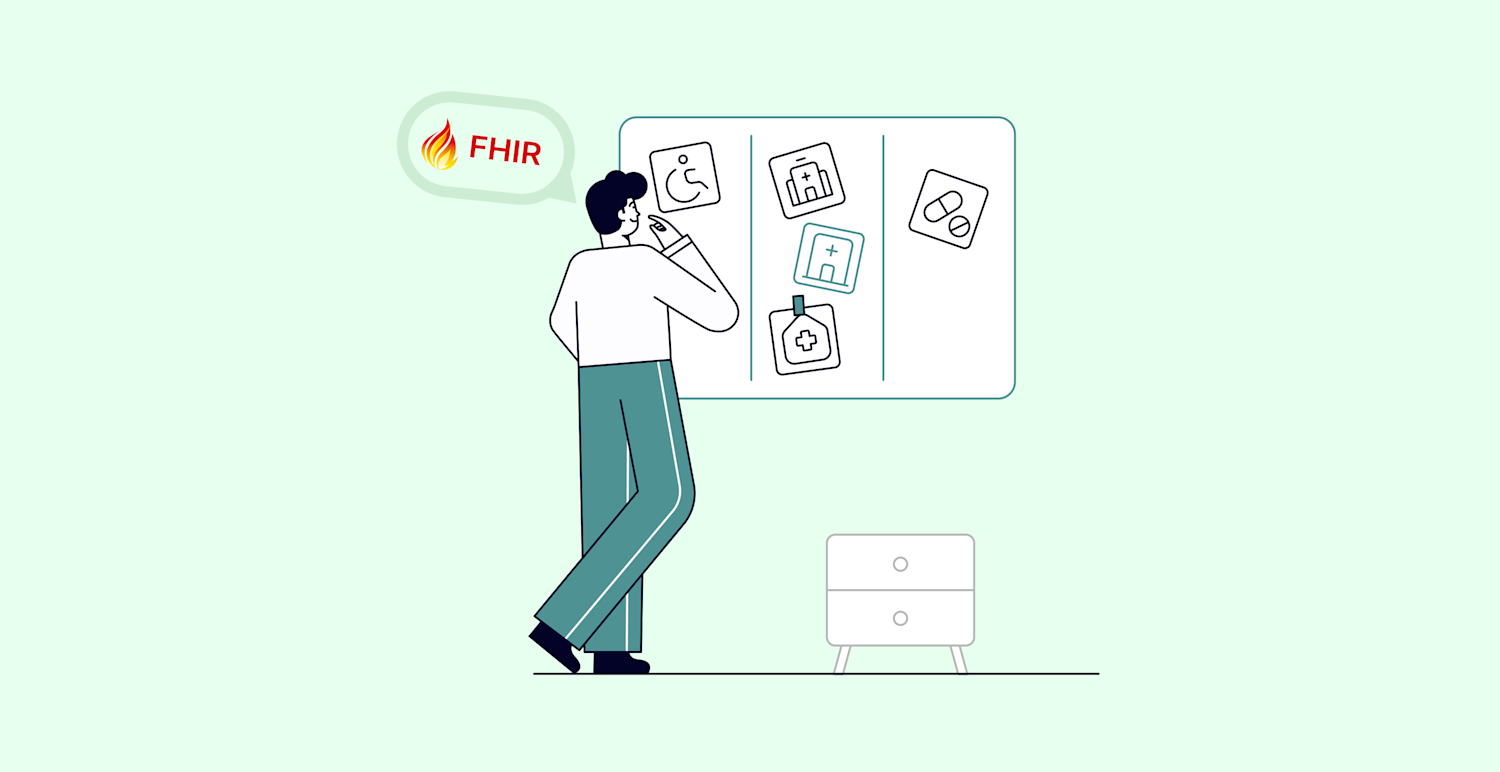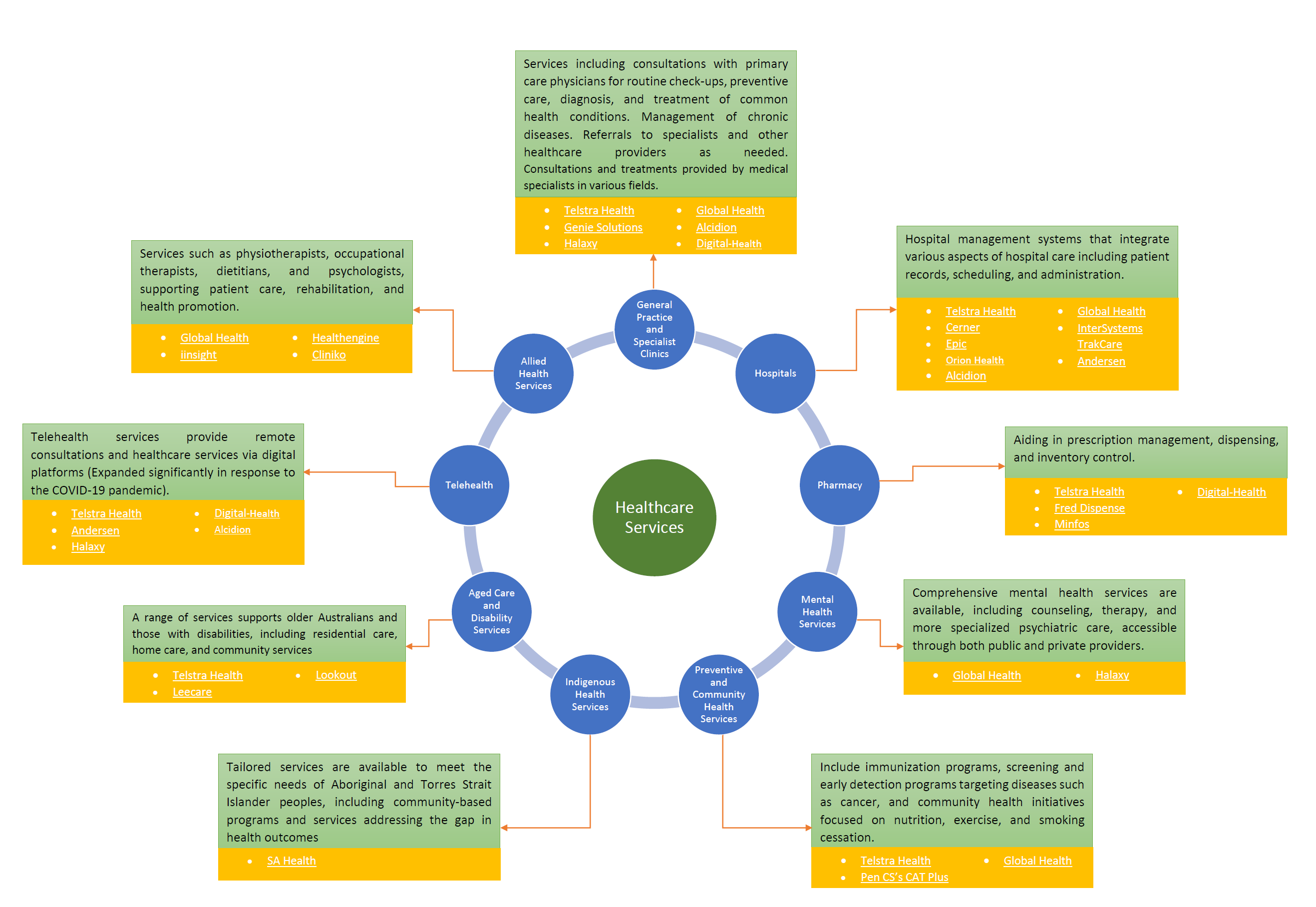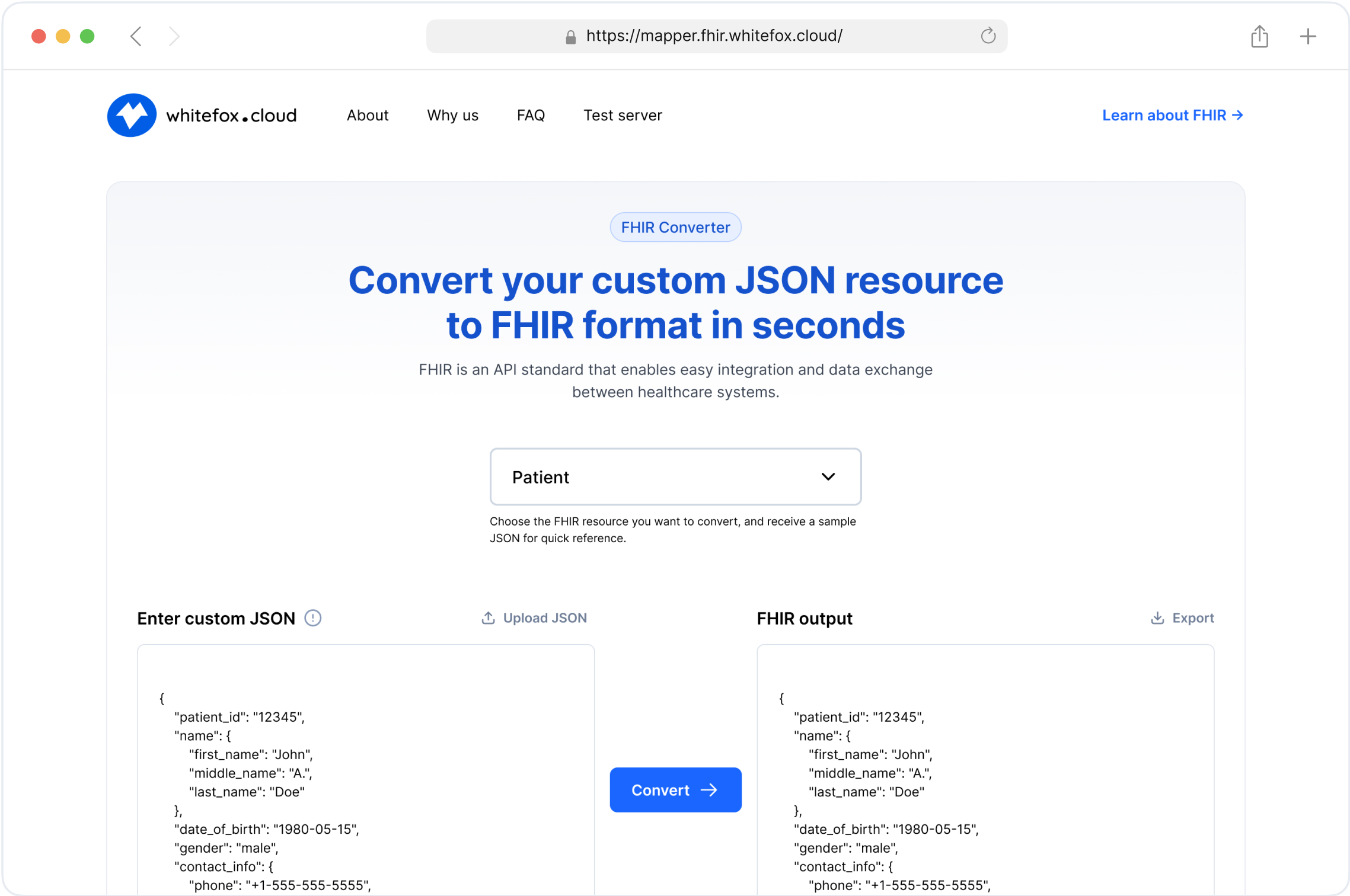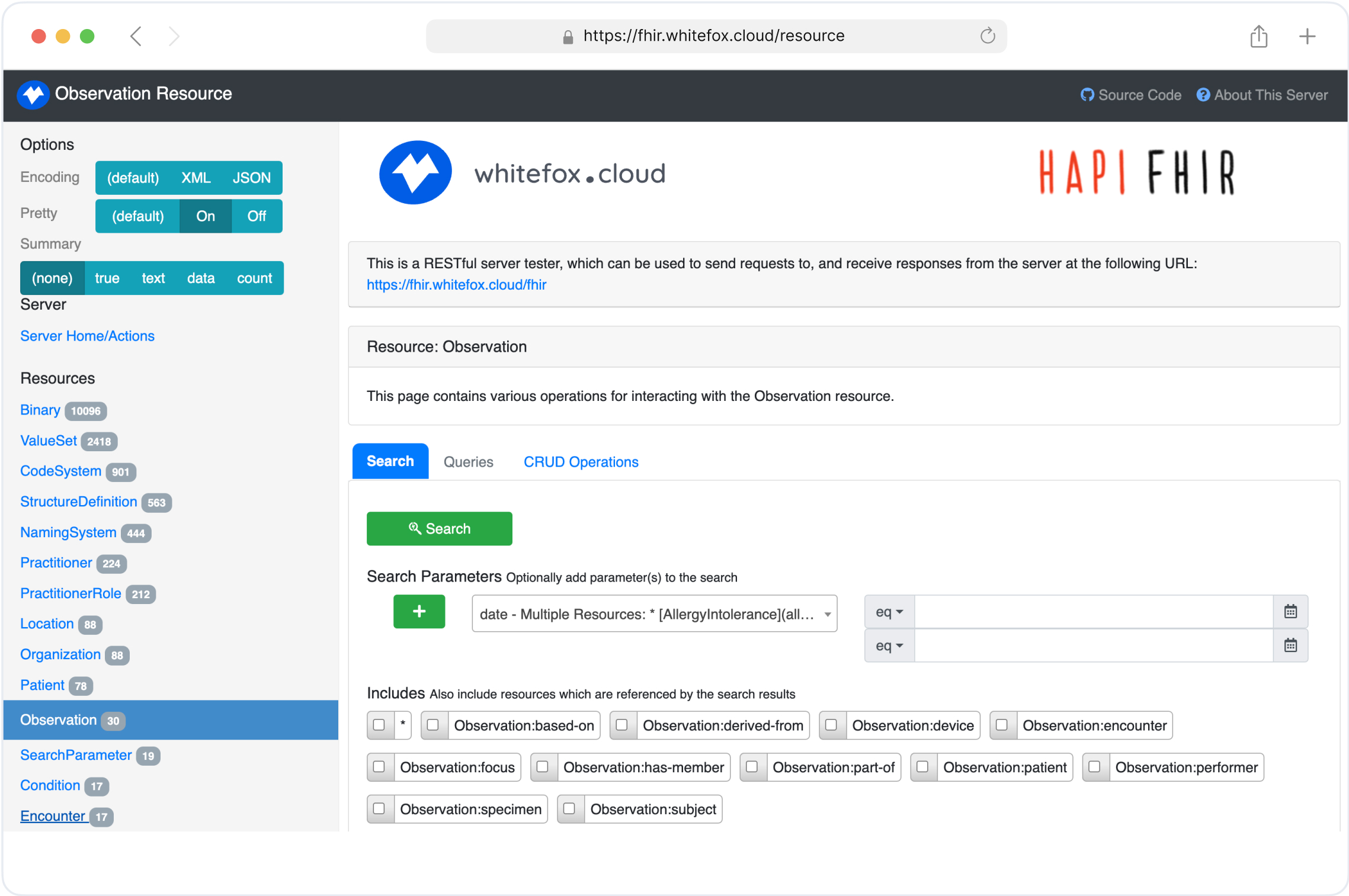
Categorising Healthcare Services in Australia

Which FHIR resource for which healthcare service
We could identify which FHIR resources, based on the AU-core implementation guide, may be used for each type of healthcare services (there might be more FHIR resources that are suitable for each category depending on different use cases). These resources can help manage and interoperate data across various healthcare scenarios in Australia, ensuring that data can be easily shared and processed in compliance with national standards.
1. General Practice and Specialist Clinics
Patient: Represents the patient receiving care, essential for all systems to maintain patient identity.
Practitioner: Represents the healthcare providers (GPs, specialists).
Encounter: For documenting visits and interactions.
Observation: For symptoms and clinical findings.
Condition: For documenting diagnoses.
Organization: Represents the clinics where services are provided.
Appointment: Manages scheduling details for patient visits.
2. Hospitals
Patient: Represents the patient receiving care, essential for all systems to maintain patient identity.
Organization: Details about the hospital as an institution.
Encounter: Represents the interaction between patient and healthcare providers during a hospital stay.
Procedure: To document medical procedures performed.
EpisodeOfCare: Management of periods of care under a particular diagnosis or condition in a hospital.
3. Pharmacy
Patient: Represents the patient receiving care, essential for all systems to maintain patient identity.
Medication: For managing information about medicines.
MedicationRequest: Prescriptions issued to a patient.
MedicationDispense: Details the dispensing of medicine to a patient.
Organization: Represents the pharmacy as an organization.
4. Mental Health Services
Patient: Represents the patient receiving care, essential for all systems to maintain patient identity.
Observation: For symptoms and clinical findings.
DiagnosticReport: For diagnostic outcomes.
Condition: Documentation of specific mental health disorders or issues.
CarePlan: Used for managing the variety of needs of a patient with mental health conditions.
5. Preventive and Community Health Services
Patient: Represents the patient receiving care, essential for all systems to maintain patient identity.
Immunization: Records about vaccinations.
Observation: For screenings and other preventive measures.
CareTeam: Managing groups of practitioners coordinating in preventive care.
6. Indigenous Health Services
Patient: Represents the patient receiving care, essential for all systems to maintain patient identity (with considerations for cultural sensitivity in data handling).
Practitioner: Healthcare providers who are specialized or experienced in indigenous health services.
CarePlan: Management and integration of traditional and contemporary care practices.
7. Aged Care and Disability Services
Patient: Represents the patient receiving care, essential for all systems to maintain patient identity (Central to managing the care of aged and disabled individuals).
CarePlan: Tailored care plans addressing the long-term care needs of the elderly or disabled.
ServiceRequest: Requests for specific services like home care or rehabilitation services.
Observation: Chronic health condition monitoring.
8. Telehealth
Patient: Represents the patient receiving care, essential for all systems to maintain patient identity.
Appointment: Scheduling telehealth (remote) sessions.
CommunicationRequest: Managing the requests for information exchange via telehealth.
DeviceRequest: Management of devices used in the delivery of telehealth services (e.g., monitoring equipment).
9. Allied Health Services
Patient: Represents the patient receiving care, essential for all systems to maintain patient identity.
RelatedPerson: Typically have a personal or non-healthcare-specific professional relationship to the patient
ServiceRequest: For specific therapeutic procedures.
CarePlan: Plans for therapy or treatment involving allied health professionals.
CareTeam: To coordinate among various health professionals.
Some AU Healthcare solution providers that mentioned FHIR standards in their services
1. Orion Health
Orion Health’s HIE is a system that integrates an Australian citizen’s health and care data from disparate systems across a geography into a single view. In healthcare ecosystems, HIE stands for Health Information Exchange. It refers to the electronic sharing of healthcare-related information among various organizations and stakeholders, such as hospitals, clinics, laboratories, pharmacies, and public health agencies. Australian health and care professionals are often time-poor and subject to cognitive overload. HIEs pull data from both traditional and non-traditional sources, giving clinicians and caregivers a comprehensive view of their patients to make the best possible decisions for the patient at the point of care. By moving away from paper records, which can only be stored in one place and viewed by one person at a time, our HIE solution provides seamless data integration and visualisation. This supports health and care professionals across primary care, secondary care, mental health, social care, pharmacy, and local councils to make more informed decisions quickly and provide better patient outcomes. Data is able to flow between different systems and organisations through a highly scalable platform built on modern technology and the latest FHIR standards for interoperability.
2. Alcidion
As they state on their website: “Alcidion was founded on one simple belief. That smart technology can drive meaningful change. Since 2000, we have worked hard to create not just world-leading health informatics and solutions, but a future that’s smarter and safer for all. Where every point of care is personalised and precise. Where clinicians have insights at their fingertips to prevent clinical errors and intervene. And where communication between clinicians is seamless and instant. Today, with our FHIR-events platform, Miya Precision, we are on a mission to help even more healthcare organisations harness the power of their data to improve patient outcomes. And we have only just begun.” Miya Precision provides healthcare systems with a platform approach to accessing critical data assets without needing to disrupt healthcare operations. Miya Precision integrates in real-time with existing b health systems, transforming data into FHIR, the industry standard for data exchange, and providing FHIR-compliant resources to other applications integrated with the Miya Precision platform. Using a combination of AI, clinical decision support, and natural language processing, our platform facilitates real-time connectivity between FHIR and non-FHIR resources, unlocking the full potential of an organisation’s digital ecosystem to help clinicians interpret critical information and make informed decisions at every level.
3. Telstra Health
Exclusive partnership with Smile Digital Health (Smile’s FHIR first Health Data Platform available in Australia and New Zealand) Telstra Health’s HIE, powered by Smile Digital Health’s FHIR first Health Data Platform, provides a centralised database for storing and managing electronic health information and clinical data from across various sources within and outside of a healthcare organisation. Built entirely on FHIR-native technology, the solution enables healthcare professionals to readily access a patient’s information and entire care journey from one solution.
(
Streamline Your FHIR Implementation with Our Free Tools


